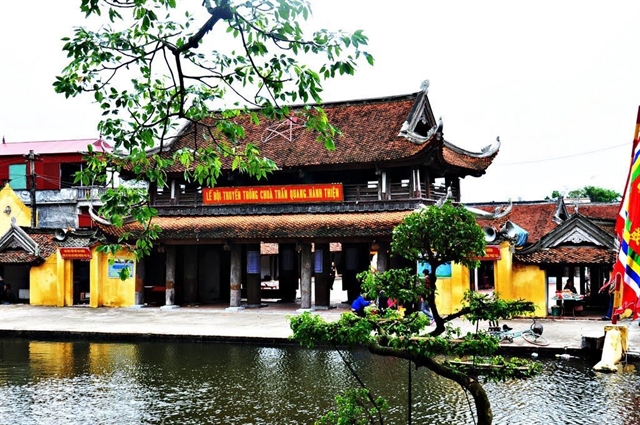
Keo Hành Thiện Pagoda is one of the most ancient pagodas in Việt Nam whose architecture has been preserved intact over its 400 year-old history. — Photo vuanhiepanh.com
NAM ĐỊNH Keo Hành Thiện Pagoda in the northern province of Nam Định received a National Intangible Cultural Heritage certificate yesterday.
The ceremony also kicked off the Keo Hành Thiện Pagoda Festival 2019.
According to Trần Lê Đoài, vice chairman of Nam Định Province’s People’s Committee, the ancient pagoda, which dates back to the Lý Dynasty (1009–1225), was a space for villagers to pay tribute to Zen master Dương Không Lộ who significantly contributed to the development of the Buddhist Sangha of Việt Nam during the Lý Dynasty.
“The National Intangible Cultural Heritage recognition will promote the historical, cultural and architectural values of Keo Hành Thiện Pagoda,” he said.
State management on preserving, protecting and promoting the values of the festival must be tightened to make it an attractive destination, which would help to boost local tourism, he added.
Legend has it the pagoda was originally built in bronze by Dương Không Lộ along the banks of the Red River in 1061 during King Lý Thánh Tông reign.
It was initially known as Nghiêm Quang Tự and then renamed Thần Quang Tự in 1167. It was also known as Keo Pagoda following the Chinese-transcribed Vietnamese name for Giao Thủy District.
After standing for nearly 500 years, the Red River flooded Giao Thủy Village where the pagoda was located in 1611. The villagers relocated to establish Hành Thiện Village and built a new pagoda.
It is one of the oldest pagodas in Việt Nam, covering 58,000sq.m in Xuân Trường District's Xuân Hồng Commune.
Many ancient historical items dating back to the 17th century are still being preserved in the pagoda such as altars, bells, and Han-scripted books about the pagoda.
The Keo Hành Thiện Festival, which includes traditional ceremonies, folk games and a boat race, will end on October 14. VNS
OVietnam